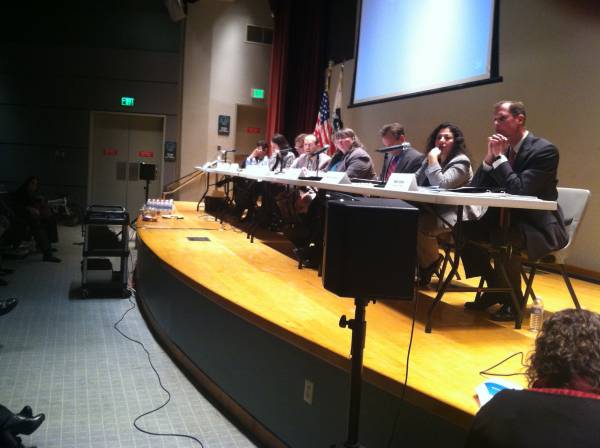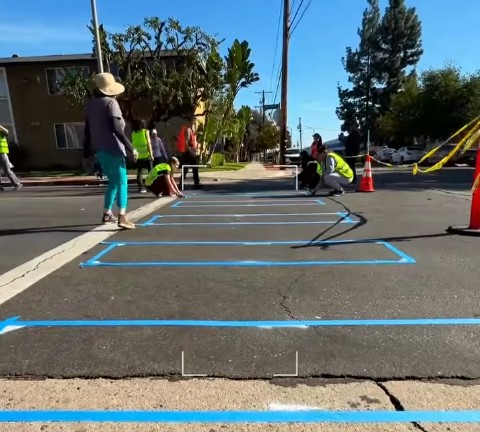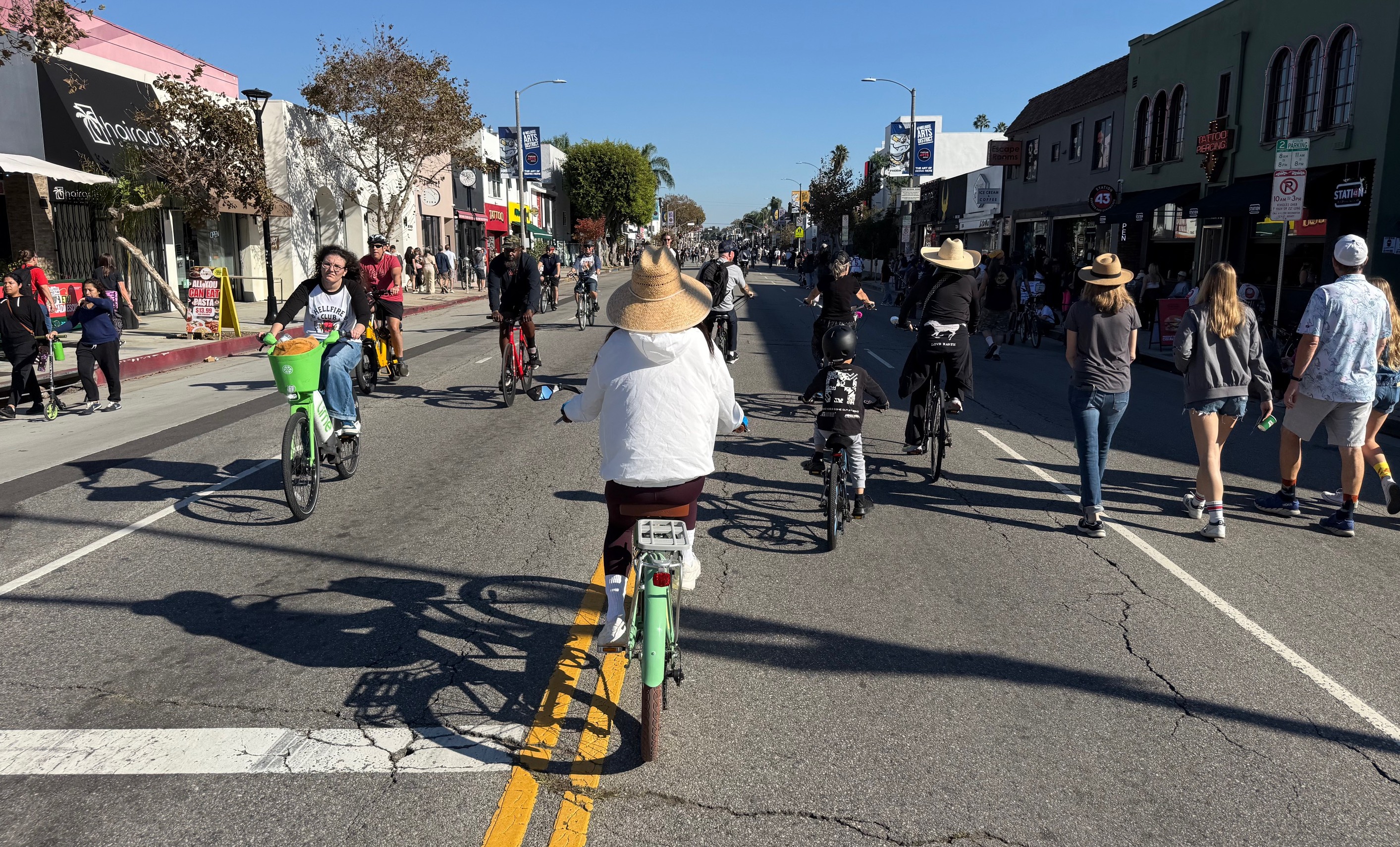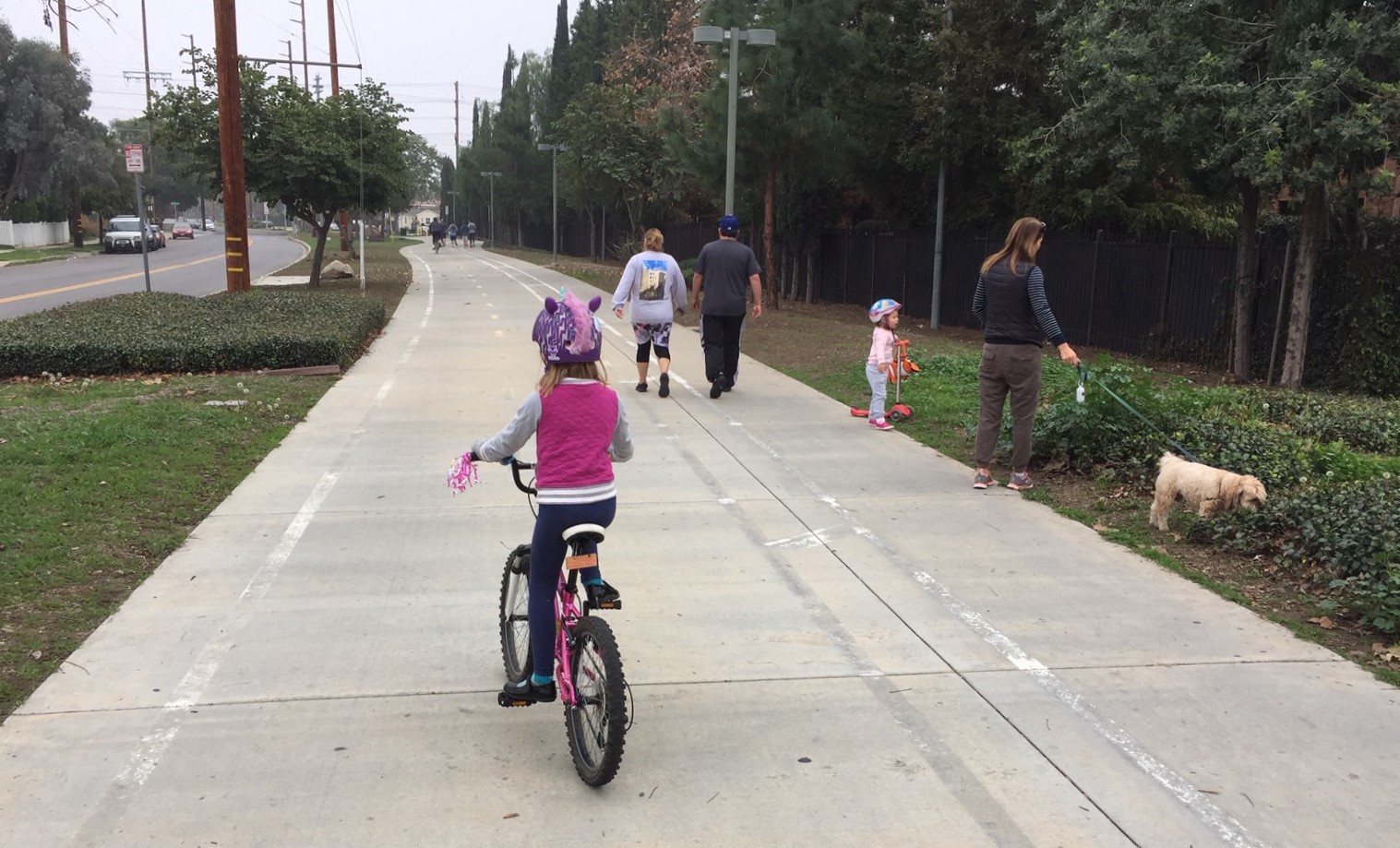When California created a "cap and trade" system to reduce greenhouse gas emissions statewide, it was widely agreed the funds raised would be spent on programs that reduce these emissions in their own right. With nearly 40% of the state's greenhouse gas coming from the transportation sector, it makes sense for a hearty investment in active transportation and transit.
Yet, according to Ryan Wiggins, the cap and trade Director for TransForm, many political figures and car-culture advocacy groups are arguing that cap and trade transportation dollars should go towards improving road conditions. By making it easier for vehicles to go faster, it will reduce the individual emissions of each vehicle. This logic is applied regularly when Caltrans and Metro officials argue about the need to widen freeways such as the 710 Big Dig Project or the never-ending 405 Widening Project in the Sepulveda Pass.
Yet many local advocates agree with Wiggins, that funding active transportation and transit need to be the priority when the state's Air Resrouces Board (CARB) decides how to allocate its funds. Yesterday, CARB held a hearing in Downtown Los Angeles and advocates attended to make the case for a cleaner transportation network that creates transportation options and reduces emissions and transportation costs.
“ We need investment in transit, especially transit operating budgets, and active transportation infrastructure to support the GHG emission reduction goals of SB 375. Federal and state transportation funding has been stagnant and even declining for years”, said Denny Zane, Executive Director of Move LA.
California’s cap-and-trade program is a primary strategy for reducing the State’s greenhouse gas emissions to meet emissions reduction targets as required by the state’s Global Warming Solutions Act. The largest portion of the state’s emissions comes from the transportation sector. For California and Los Angeles to achieve long-term emissions reductions, they will need sustained investment in expanding public transit, biking and walking, and ensuring affordable and transit-accessible housing.
"We want this money to be invested in long-term investments to reduce dependency on the automobile," argues Wiggins. "These funds come from cap and trade from greenhouse gases, so they should go to pay for programs that reduce the amount of greenhouse gases in our air."
The "cap" in "cap and trade" sets a limit on emissions, which is lowered over time to reduce the amount of pollutants released into the atmosphere. The "trade" creates a market for carbon allowances, helping companies innovate in order to meet, or come in under, their allocated limit. The less they emit, the less they pay. Cap and trade theoretically creates an economic incentive to pollute less.







